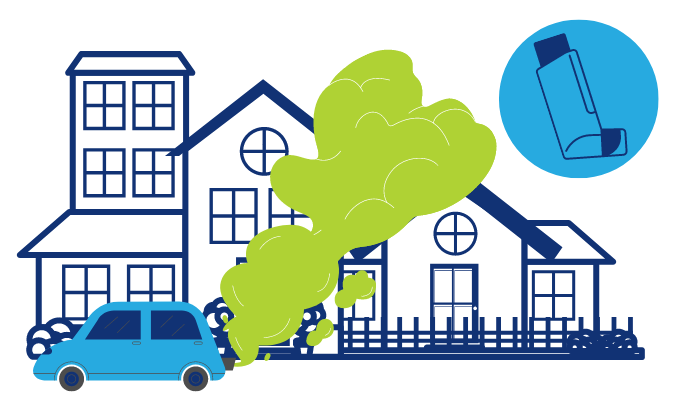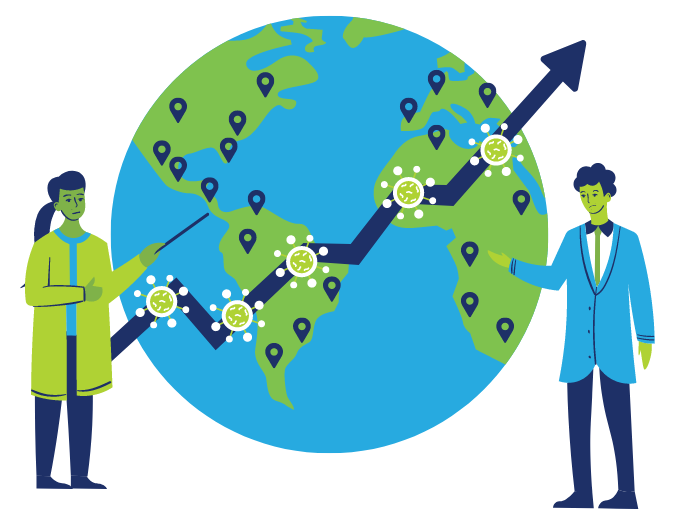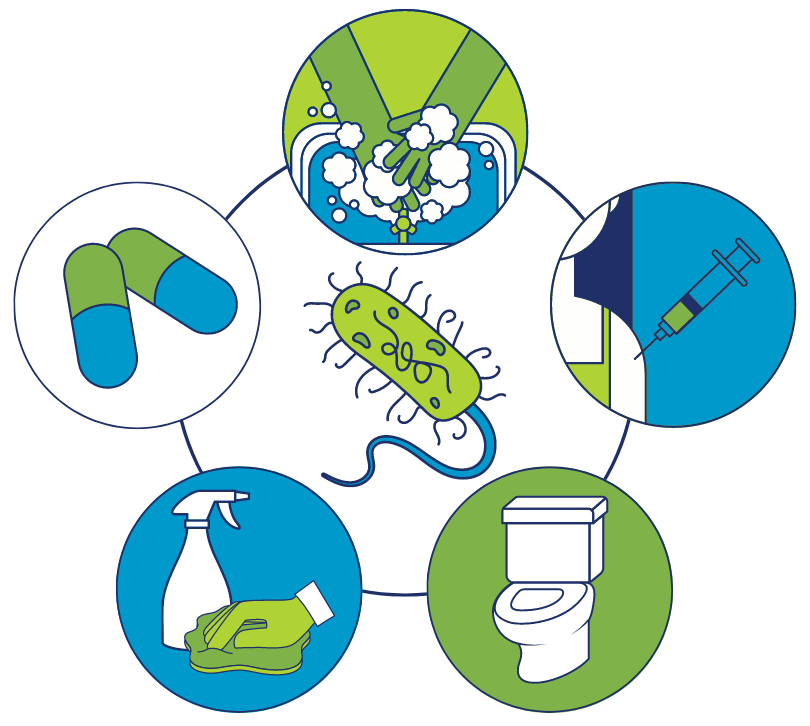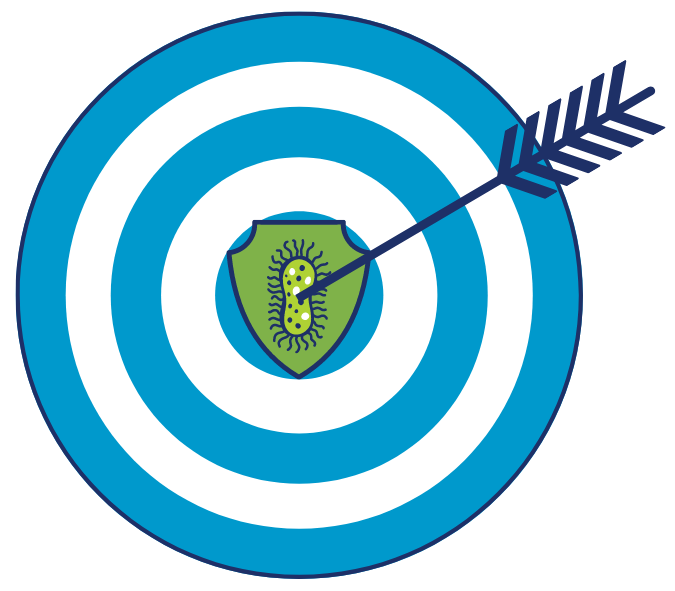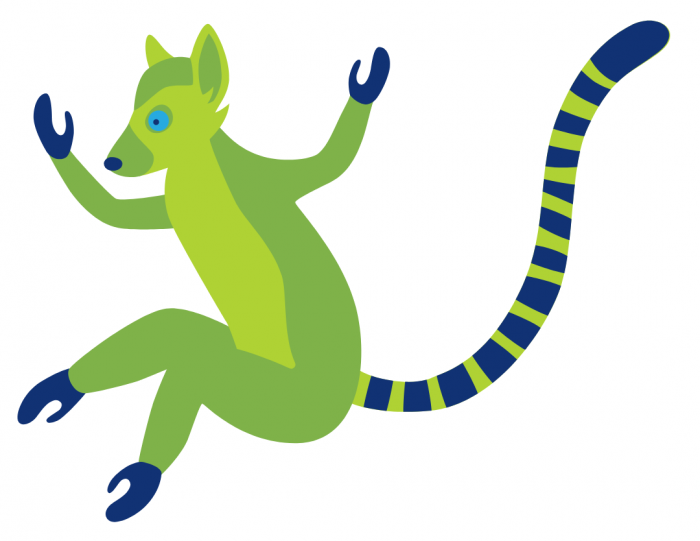
Lemurs are cute and interesting, and they live in only one place: Madagascar. As primates, they are related to humans, monkeys, and apes. They are also endangered.
Dr. Travis Steffens has wanted to help save lemurs since he was a little boy. On the way to living that dream, he found out that he couldn’t save these animals without also helping people and the environment. His charity, Planet Madagascar, works to save lemurs and improve the lives of people who live with and near them.
In this episode, host Maggie Fox chats with Dr. Steffens, Assistant Professor in the Department of Sociology & Anthropology at the University of Guelph. Listen as he describes how lemurs are more than just adorable animals.
Maggie Fox 00:01
Hello, and welcome to One World, One Health—a place to talk about ways to improve the health of our planet and its people. I’m Maggie Fox. Our planet faces so many challenges—pollution, climate change, and new and reemerging infectious diseases like COVID. And they’re all related. This podcast is brought to you by the One Health Trust with bite-sized conversations with people who are helping.
Travis Steffens always wanted to study lemurs—distant relatives of human beings that are both adorable and endangered. They only live in one place—Madagascar, a large island east of the African continent. But Travis quickly found he couldn’t help lemurs without helping people too. In this episode, we’re chatting with Travis, who’s Assistant Professor in the Department of Sociology and Anthropology at the University of Guelph in Canada. He’s also founder of a charity called Planet Madagascar. Travis, thanks so much for joining us.
Travis Steffens 01:01
Oh, it’s lovely. Thanks for having me.
Maggie Fox 01:02
Travis, can you tell us a little bit first about your work in Madagascar?
Travis Steffens 01:07
Yeah, well, I’m super fortunate. Obviously, I get to hang around with lemurs. Lemurs are a type of primate; those fuzzy little kind of cat like looking primates that hop around forests in Madagascar. What I do is I go there, and I look for where they are and why they’re there. And I do that in the context of trying to understand their relationship or interactions with people, and how people impact their environment.
And the interconnections between those two things, because both humans and lemurs share forests. And so, I’m trying to understand how that mostly impacts lemurs, but is part of a more of a connected system.
Maggie Fox 01:42
So how could lemurs affect human health? What do they have to do with human health?
Travis Steffens 01:47
Lemurs are a primate just like us. And so, in that sense, we can share a lot of pathogens and potential parasites and things like that with each other. Fortunately, lemurs are a distant relative. So, our last common ancestor would have probably been 40-50 million years ago.
So, in that sense, we can understand some of the progression of disease and the evolution of disease that impacts all primates by looking at things like lemurs, but they they’ve been found to share things with humans. We found humans actually giving primates or lemurs, in this case, pathogens. There’s been examples of cryptosporidium found in lemurs.
Maggie Fox 02:26
And tell me a little bit about cryptosporidium. What’s that?
Travis Steffens 02:30
Cryptosporidium is an ——, that is, I think, the most common zoonotic disease on the planet. I think, I can’t remember the exact numbers, (but) something like 80% of people at some point will have Cryptosporidium. We have it in Canada, the US, all across the world.
Maggie Fox 02:44
And it’s a parasite. ——, it’s a parasite in the form of an egg.
Travis Steffens 02:49
Yeah, exactly. And you ingest it. So usually, somehow, you’ve ingested some contaminated food or water. In the case, and with most human cryptosporidium, it’s often passed from cattle to humans or from human to human. But there’s all sorts of different types of cryptosporidium.
And some of the human ones seem to be and potentially the cattle and seem to be going into lemurs, at least in captivity. And so, they don’t do great on it. Humans are relatively tolerant. It can be a problem for people who are young or have poor immunity. And it doesn’t seem to help lemurs much.
Maggie Fox 03:27
So, studying lemurs can help you understand the spread of Cryptosporidium, and what does that tell us in general, about how people are interacting with their environment?
Travis Steffens 03:36
Yeah. So, if we can figure out which cryptosporidium types are moving around and which species it’s moving into and through, we can start understanding more holistically some of the connections between humans and their environment and these pathogens. So, if we’re seeing, for example, in lemurs that they’re getting the pig type of cryptosporidium, or the cow type of cryptosporidium, well, then we can see that maybe it’s not being driven through by humans.
It’s being driven by their domestic animals, but now it’s going into a wildlife reservoir that then like I said, earlier, could come back to humans. And so, understanding these pathways gives us a real clue into sort of the evolution of these ecological pathways and how they would have erupted in the first place and how we are probably impacting ourselves in a sort of double sense, you know.
We’re influencing the environment, which gives us an opportunity to receive new pathogens by engaging with (the) environment in ways we hadn’t before. But by also putting some in, we’re creating a new opportunity to get some back from ourselves in response.
Maggie Fox 04:36
And where you’re working, it’s very remote, far from cities or towns.
Travis Steffens 04:40
Yeah. And you know, it seems like a faraway thing happening in a place in the, you know, the opposite side of the world. And, in many ways, it is, you know, this is. You have to fly quite far. It takes almost a day or so to get there with the drive up about 11 hours to get to the site, and it’s far from a highway. You’re sitting in a valley surrounded by deciduous dry forests, so these are forests that shed their leaves during their dry season, sort of like, like a winter.
And the communities that live there belong to the ethnic group, the Sakalava. The word sakalava means long cats. So, this is, they’re very tall people and so that’s they’re self-describing themselves in their name. And they live intimately with their environment, you know.
They’re agriculturalists, who also do subsistence living through the forest. And so they get their wood from the forest, they get their housing from the forest, they get food from the forest, and their communities are inside of forests and the in the case of where I work. And there’s lemurs in those forests that share that environment with them.
Maggie Fox 05:46
You’re painting what sounds like a very harmonious picture. These people live in their environment and it sounds very pleasant. It sounds very nice. So, yet I understand that lemurs are endangered. How? What’s going on there? Are people endangering the lemurs?
Travis Steffens 06:00
Yeah. Alison Jolly, she’s a relatively famous primate researcher in Madagascar, and she said, it’s a tragedy without villains. It’s a scenario where you have what I’m describing seems idyllic. In fact, the valley that I work in, the people who settled that valley about 3040 years ago, picked it because it was idyllic. It was beautiful. It had a river, great to grow rice, the forest was nearby, it was relatively cool. But the reality is they left a place that had been deforested.
The economic situation became very difficult. There was other concerns. They have religious beliefs and stuff that weren’t accepted in the areas they were, so they moved for that reason as well. But Madagascar itself is under a situation where people trying to survive and make a living for themselves also coincides with a lot of forced conversion.
And often that conversion is to something that’s not compatible with a large amount of biodiversity. This case, turning forest into rice fields, or turning forests into charcoal, to heat homes, to cook food, things like that.
Maggie Fox 07:05
Well, tell us a little bit more about the lemurs. Everybody thinks they’re cute little animals but tell us what you know about them.
Travis Steffens 07:12
Lemurs are, there’s over 100 species of them. They can be as small as a mouse, there’s a mouse lemur, the smallest primate in the world. It’s about the size of an egg, (it can) fit in the palm of your hand. The largest (current) lemur looks to me like a two-year-old wearing a panda suit. ——. They have these raucous calls that sound like they have a trumpet in their throat.
Some lemurs are omnivorous. Some lemurs are you know, they’ll eat anything. Some lemurs only eat leaves, some lemurs typically only eat fruit. They’re mostly in the trees, and they (have a) amongst them have a really interesting form of locomotion —— vertical cleaning and leaping.
So, they’ll hang on to a tree. And they have these massive femurs that allow them to explode like a spring off the tree. They launch themselves through the air. I’d say it’s like a kangaroo practicing kung fu as they flip in the air, turn and land on the next tree and bounce to the —— like this.
Maggie Fox 08:09
So, they’re cute. It sounds like they’re wonderful to watch. It sounds like they’re interesting animals. But why should people work hard to preserve them other than the cuteness of them? What impact do they have on the well-being of the people they’re living around?
Travis Steffens 08:23
Yeah. So, they’re immediately important for the communities because of a variety of reasons. One of the main ones is that lemurs are the most abundant mammal in terms of species diversity. There’s over 100 species and a lot of lemurs eat fruit, like I mentioned, and they then disperse the seeds of those fruiting trees throughout the forest, helping promote forest growth.
Those same fruit trees, grow tall, provide habitat that are also suitable for humans to live and provide fruiting trees that humans like as well. And so, as seed dispersers are really important for forests and forest maintenance. They’re important economically in terms of in tourism dollars. There’s people that will pay a fair amount of money to go look at the lemur. So, a lot of national parks are set up around this idea of seeing lemurs.
We can learn a lot about ourselves from learning about lemurs. You know, there’s a form of Simian Immuno virus (SIV) that’s related to HIV that’s in lemurs that is extremely non-infectious to us. And so, understanding why that is, where HIV is very infectious, can give us a lot of ideas about the evolution of that type of virus.
And there’s countless you know that there’s so much genetic information stuck in lemurs, that’s only found on this one island, the only place you can find them. So, losing them, we lose, we lose millions of years of evolutionary knowledge.
Maggie Fox 09:43
And the people who live here, how do they view the lemurs? Are they a nuisance, or do they like them? Or do they just kind of coexist with them?
Travis Steffens 09:50
There’s roughly 18 ethnic groups in Madagascar and they all have different relationships to the animals they live with. A group that I live with typically regards lemurs as pleasant creatures that they see some kinship with. They typically don’t hunt them. And there’s other ethnic groups that revere lemurs. Some species have the opposite problem where for some of the ethnic groups think they’re evil and will actively kill them if they see them.
Then there’s the whole idea that lemurs are kind of like squirrels in this scenario. They’re commonplace for people. So just like you and I see raccoons or squirrels as sort of normal common things, they see them as just parts of the forest. And so, there’s a varied relationship between people and lemurs.
Maggie Fox 10:39
So, you’re an anthropologist. How does studying people and how they fit in with animals and the environment, how does that end up helping people in the long run?
Travis Steffens 10:49
Yeah, being a biological anthropologist, and with most of my core research focused on lemurs, and how lemurs are impacted by people. That can tell us a lot of stuff. We could say, okay, lemurs are gonna respond this way to human activity, etc. But the reality is humans are doing that activity. So, we have to understand why humans are doing it, what their perceptions are about the animals in the forest around them.
And then by doing that, we can learn from them local solutions to addressing conservation, but also finding ways and levers for behavioral change to help protect lemurs. And so, by investigating the people part, conservation is a people problem, people cause it. So, we have to understand why. And so, understanding that will help us find solutions that are relevant to the communities that we work with.
I can come up with a solution from the lemur side, but it may have no cultural palatability. And so, we have to study people to understand what are they willing to do, what solutions do they think would make most sense in the context of the information we also have, and how do we connect those things together. And that’s where a holistic approach is sort of necessary for our problem as large as lemur conservation of Madagascar.
Maggie Fox 11:58
It sounds to me like you set out to help lemurs but found out you can’t help lemurs without helping people.
Travis Steffens 12:05
Yeah, and I went to Madagascar. I was laser beam focused on lemurs. You know, I was —— , they’re trying to figure out how to answer the question of PhD. I was a scientist and I basically had blinders on. I was myopic to anything else, (I) just wanted to focus on this one thing. I obviously knew the problems happening in Madagascar had been living there previously.
But I just focused singularly on this question. And then I realized that I can’t solve this problem or address these issues without including these communities that are living in connection to these lemurs.
So, I had to figure out a way to combine the two. Otherwise, it just wasn’t tenable. You know, I have a privileged position as a professor at university. You know, my lifestyle is privileged. And yet I couldn’t have done all the work I’ve done to get here without help from the people in these communities.
Maggie Fox 12:49
Tell us a little bit about your charity. What’s it called?
Travis Steffens 12:51
Yeah. It’s called (the) Planet Madagascar. The idea of calling it Planet Madagascar was that Madagascar is like a world in an island, like traveling to a whole new planet. I think 80% of what you find on that island is only found there.
And the idea is that if we can find a solution or strategies to solve the complex problems related to the issues we see in Madagascar there on an island that’s the fourth largest island in the world (almost a continent, it used to be its own continent, in fact, millions of years ago), if we can find solutions there, then we can find solutions for larger areas. And we can start applying the strategies we do in Madagascar and other places. So that was the impetus behind the name.
And it really was born out of a kind of a sad story. I was doing my research. I was working in this remote area near this remote community. And I was negotiating some logistics with the community and one of the young women in the community is this eight-year-old girl, she died of a easily curable disease. If two weeks earlier, if she would have had antibiotics, she probably would have been fine. So, I’m not a doctor. And I’m a —— researcher. And when this young girl passed away, I thought this was a curable disease.
I spent a lot of money relative to the income in these communities. And the amount of money I spent on my research could have paid for everyone’s entire livelihoods for three or four years in the community I was near, which is staggering when you think about it. So, I thought there has to be a way to connect my ability to find money to study and conserve lemurs with the people that live beside and with these lemurs. And that’s where the idea of Planet Madagascar came about.
Myself and a colleague in Madagascar started discussing what would these solutions look like, how do we engage with these communities, and we’ve been slowly building it since then, that was started back in 2015. There’s no place that you can say, look at this other place, it’s just like Madagascar, look at how many things that shows that and losing Madagascar is a sort of a there’s no win there. We’re not going to find a way to get it back.
And so, if we can really focus on situations, not the only scenario like this in the world, but it’s the situation with the most biodiversity at the greatest risk. And if we could do something about that there, we can learn so many lessons for other places that have similar issues that we can apply strategies that we use there.
And I think that’s a really key message to take home that we can solve it. The solution to Madagascar is relatively inexpensive in terms of global GDP and such. It’s just a willingness to tackle it.
Maggie Fox 15:13
Travis, thanks so much for taking the time to chat with us.
Travis Steffens 15:17
It was my absolute pleasure. Thank you very much.
Maggie Fox 15:19
Listeners can share this podcast which is brought to you by the One Health Trust by email, LinkedIn, or your favorite social media platform and let us know what else you’d like to hear about at owoh, that’s [email protected]. Thanks for listening.
Guest
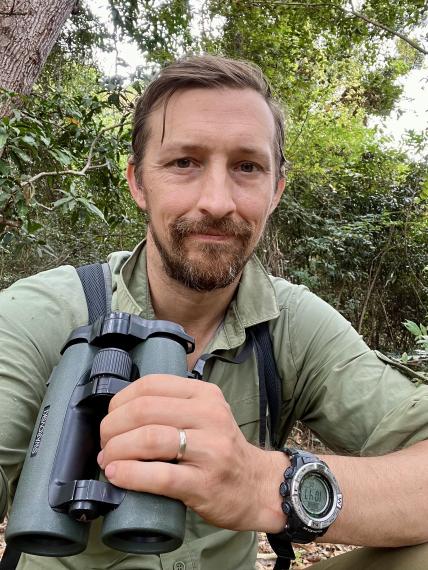
Dr. Travis Steffens is an Assistant Professor of Anthropology at the University of Guelph. His research program investigates human-lemur interactions within a shared environment. He leverages conservation biogeography, spatial ecology, and One Health approaches to understand how lemurs interact with and respond to human-caused disturbance. Travis is also interested in how humans are impacted by applied conservation measures targeting lemurs and their habitat. Specifically, he is interested in understanding the factors determining lemur species richness and occurrence in habitat shared wtih people. As a public anthropologist, his aim is to leverage the above approaches to provide applicable solutions that improve the lives of people, improve the conservation situation for lemurs, and protect the environment that people and lemurs share. He is also a member of the International Union for the Conservation of Nature, Species Survival Commission, Primate Specialist Group for Madagascar, an International Fellow of the Explorers Club, a Fellow of the Royal Canadian Geographic Society, and founding Director of Planet Madagascar, a charity focused on helping to create sustainable forest communities in Madagascar.
Credits
Hosted and written by Maggie Fox
Special guest: Travis Steffens
Produced and edited by Samantha Serrano
Music composed and sound edited by Raquel Krügel
Transcript edited by Dipyaman Sengupta

